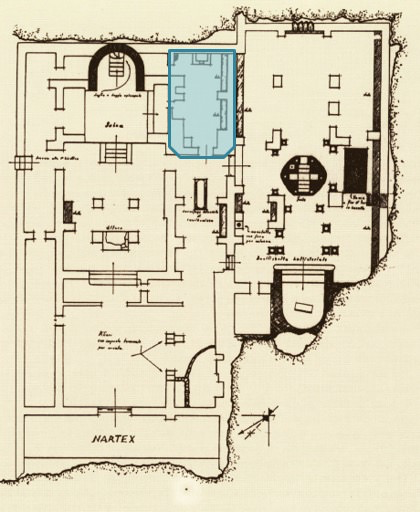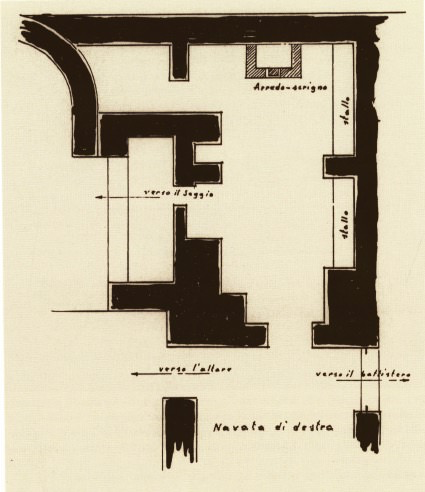Furniture-casket from the main basilica
In the episcopal basilica of Cornus, to the right of the apse, you have the so-called consignatorium (fig. 1); in the background, in a central position, you can see a lytic furniture item (fig. 2). It is a kind of parallelepiped box (h. cm 63 x length cm 1.36 x width cm 82); its sides are formed by three limestone slabs, while the wall of the consignatorium acts as its rear side (figs. 3-5); discovered on top, there is a quadrangular recess on the prospectus: this led to assume that it was originally closed by a cover with a small hatch or a metal lock placed in the front recess (for similarity with the lock see fig. 6; for the box see figs. 7-8).
The box has been interpreted in various ways: as an altar-shrine, as a furniture-casket, holding the seal and furnishings linked to the functions held by the bishop in that chamber. With side benches, the chamber was probably dedicated to celebrating the sacrament of confirmation and the signing of documents by the prelate.








Bibliografia
- O. ADDIS, Il complesso paleocristiano di Cornus secondo i risultati di un recente scavo, in Atti del XIII Congresso di storia dell'architettura (Cagliari, 6-12 aprile 1963), I, Roma, pp. 181-190.
- G. FARRIS, Le aree paleocristiane di Cornus, Oristano 1993, pp. 74-77.
- G. ZANCHI, Lo spirito e le cose. Luoghi della liturgia = Sestante, 19, Milano 2003.

 VR
VR